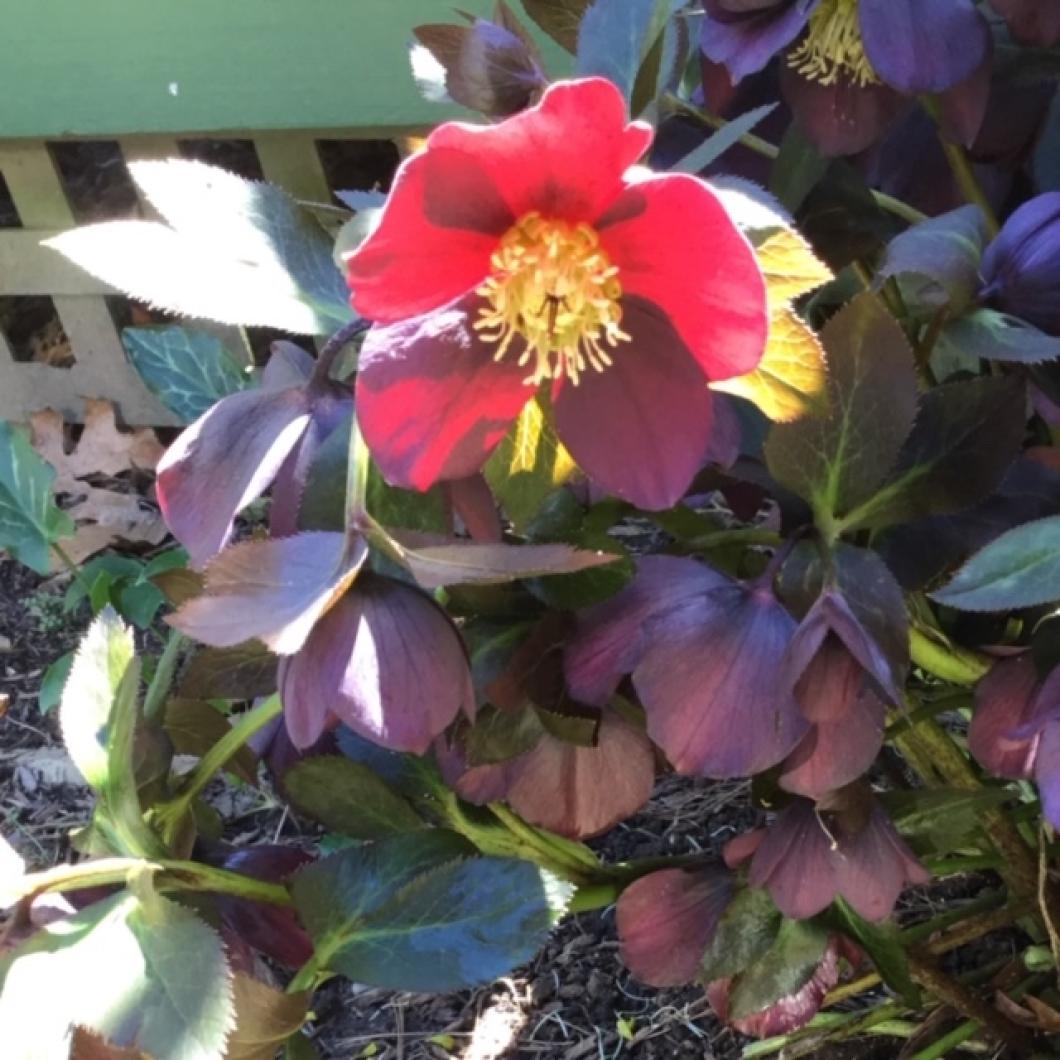Hooray, hellebores are here!
Before the pop of spring last week, I was begging for blooms — something to show that the season was turning and that the gray would really go away. Cathy Minkiewicz, plantswoman of West Tisbury, can always be counted on for a raising my botanical spirits. She improved my mood with the report that she has a plurality of plants with flowers. Included in her list were daffodils, vinca, cherry buds, paperbush and hellebores.
Hellebores caught my ear as I am not as familiar with garden plants as I am with local, native Island species. Though their name would make a decent designation for the star of a scary movie, hellebores are more closely associated with holy days than horror flicks. Hellebores, also called Lenten roses and Christmas roses, are a group of species and hybrids in the Ranunculaceae, or buttercup family. Hailing from central Europe and Asia, these varieties have found a home in many gardens in this country.
As early bloomers, hellebores emerge in different regions as early as December, giving rise to the Christmas rose nomenclature, though they are not botanically related to roses at all. Legend has it that this so-named holiday flower sprouted in the snow from the tears of a young girl that had no gift for the Christ child. Lenten rose speaks to another variety’s later flowering time in March.
Even with these holy associations, hellebores have an antithetical power. Folklore suggest that this plant can summon demons and it was used by sorcerers to render them invisible. Naturalist Pliny the Elder insisted that if an eagle observes someone digging up a hellebore, the bird would cause their death. He adds that one should “draw a circle round the plant, face East and offer a prayer if it must be dug up.”
During Elizabethan times, hellebore was planted near the door to keep a home free from evil spirits and witches.
This duality is not surprising, since the plant seems to have both medicinal and toxic properties. Every part of the plant is poisonous and care should be taken while handling and if ingested. In 585 BC, during the Siege of Kirrha, hellebore was used by the invading army to poison the water supply of their enemy, who became too weak from diarrhea to fight them off following this contamination. In another historic death, some sources suggest a servant poisoned Alexander the Great with hellebore.
Even deer and rabbits usually won’t voluntarily consume hellebore, another reason for its popularity in gardens. In humans, burning of the skin and dermatitis have been reported after skin contact. Internally, consumption instigates burning of the mouth and throat, salivation, vomiting, cramping, diarrhea and depression. It can be fatal, according to sources.
Even with these concerns, some have employed hellebore for healing. Greek and Romans used it to treat paralysis, gout and insanity. Children with intestinal worms were offered hellebore to cause vomiting in hopes of purging the crawlers. Hercules is reported to have cured his madness with a potion that included hellebore. But it was strong medicine, and this advice was given: hellebore “was not to be used on cloudy days and should not be given to the very young, the old or the effeminate.”
Even though hellebore is no longer the only bloom in town, it can be revered for its history, potency and drama, making hellebore anything but a bore.
Suzan Bellincampi is director of the Felix Neck Wildlife Sanctuary in Edgartown, and author of Martha’s Vineyard: A Field Guide to Island Nature and The Nature of Martha’s Vineyard.




Comments
Comment policy »